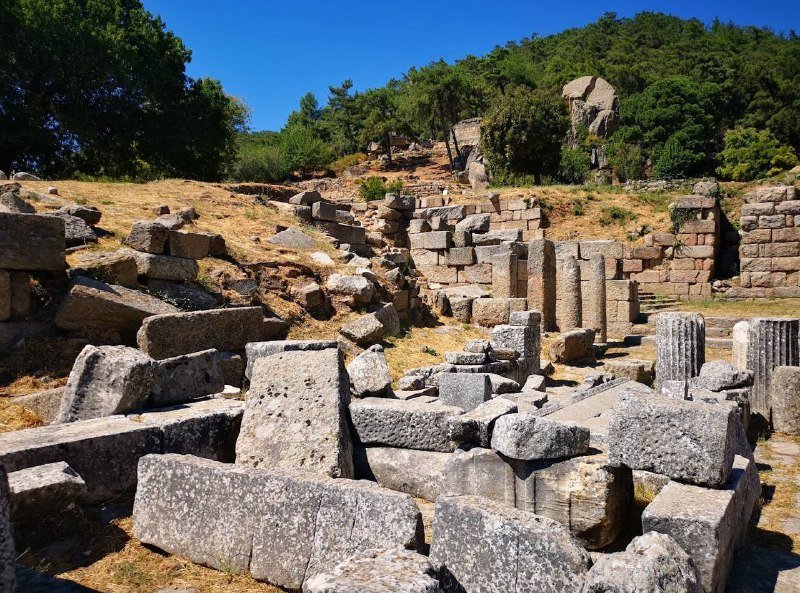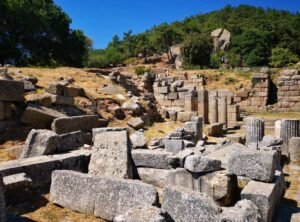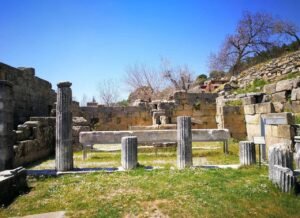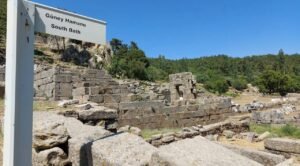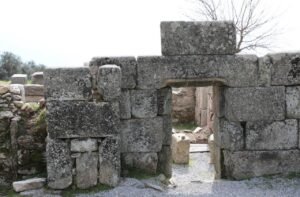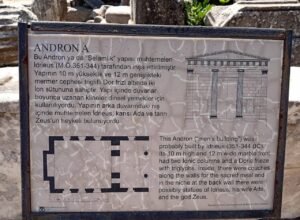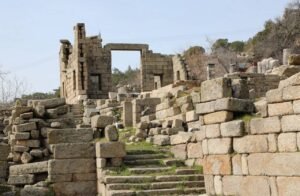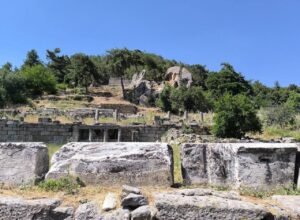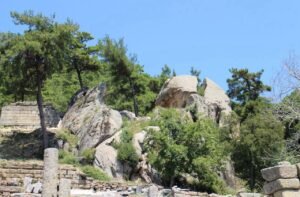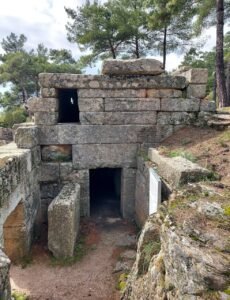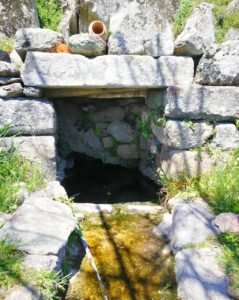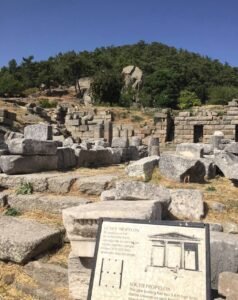Description
Labraunda Sanctuary: A Hidden Gem in Muğla’s Mountains
Nestled in the pine-covered hills of Muğla Province, Labraunda is an ancient sanctuary that offers a captivating blend of history, architecture, and natural beauty. Once a sacred site for the Carians, an indigenous people of southwestern Anatolia, Labraunda stands as a testament to the region's rich cultural heritage.
A Sacred Site in Caria
Labraunda, located approximately 14 kilometers northeast of Milas (ancient Mylasa), was a significant religious center dedicated to Zeus Labraundos, the chief deity of the Carians. The sanctuary's name is believed to be linked to the "labrys," a double-headed axe symbolizing Zeus's power. This emblem was central to the site's religious iconography, with coins from the era depicting Zeus holding the labrys and a lotus-tipped scepter.
Architectural Marvels
Perched at an altitude of about 700 meters, Labraunda's structures are built on a series of artificial terraces carved into the mountainside. The most prominent edifice is the Temple of Zeus Labraundos, constructed in the 4th century BCE under the patronage of Maussollos and his brother Idrieus. This temple, showcasing a blend of Ionian and Achaemenid architectural elements, was part of a larger complex that included banquet halls (androns), stoas, and a sacred spring believed to have oracular properties.
One of the most remarkable features is the Andron A, a monumental banquet hall built by Idrieus. This structure, used for ceremonial feasts, exemplifies the grandeur of Hellenistic architecture and offers insights into the social and religious practices of the time.
The Sacred Way
Connecting Labraunda to Mylasa was the "Sacred Way," a 13-kilometer-long paved road used for religious processions and festivals. Pilgrims would traverse this path, winding through olive groves and fig trees, to participate in ceremonies honoring Zeus Labraundos. The road's remnants still exist today, offering visitors a tangible link to the ancient rituals once performed here.
Rediscovery and Excavations
Although Labraunda was known in antiquity, systematic archaeological excavations began in the mid-20th century, led by the Swedish Institute at Athens. These efforts uncovered significant structures and artifacts, shedding light on the site's historical importance. Recent excavations, supported by the Turkish Ministry of Culture and Tourism, have focused on restoring monumental terrace walls, ceremonial gates, and sacred chambers, further enhancing our understanding of this ancient sanctuary.
Visiting Labraunda Today
For modern visitors, Labraunda offers a unique opportunity to explore a well-preserved ancient sanctuary set amidst stunning natural scenery. The site's remote location means it's less frequented by tourists, providing a peaceful atmosphere for exploration and reflection.
To reach Labraunda, travelers typically drive from Milas, enjoying a scenic route through the Turkish countryside. While public transportation options are limited, the journey rewards visitors with breathtaking views and a chance to walk in the footsteps of ancient pilgrims.
Conclusion
Labraunda stands as a remarkable testament to the religious and cultural practices of ancient Caria. Its blend of architectural sophistication, historical significance, and natural beauty makes it a must-visit destination for history enthusiasts and travelers seeking to uncover Turkey's lesser-known treasures.
Location
-
Kargıcak, 48200 Milas/Muğla
